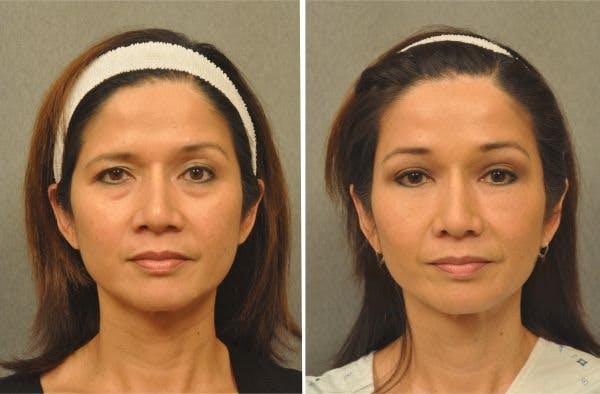
Endoscopy is a surgical technique that involves the use of an endoscope, a special viewing instrument that allows a surgeon to see images of the body’s internal structures through very small incisions.
Endoscopic surgery has been used for decades in a number of different procedures, including gallbladder removal, tubal ligation, and knee surgery. Dr. Gilbert Lee uses endoscopy for both cosmetic and reconstructive procedures.
The Endoscope
An endoscope consists of two basic parts: A tube fitted with a tiny camera and bright light which is inserted through a small incision; and a viewing screen, which magnifies the transmitted images of the body’s internal structures. During surgery, your surgeon watches the screen while moving the endoscope through the surgical area. The endoscope is the size of a large straw.
Endoscopic Advantages
-
-
Scars are likely to be much smaller and hidden
-
Only a few small incisions, each less than one inch long, are needed to insert the endoscope.
-
Can eliminate the need for an overnight hospital stay.
-
Endoscopic Cosmetic Surgery
Abdominoplasty (Tummy Tuck)
Endoscopy is sometimes used on selected patients who have lost abdominal muscle tone. Guided by the endoscope, the muscles that run vertically down the length of the abdomen may be tightened through several short incisions.
Breast Augmentation (Breast Implants)
Inserted through a small incision in the underarm, an endoscope can assist the surgeon in positioning breast implants within the chest wall. Endoscopy may also assist in the correction of capsular contracture (scar tissue that sometimes forms around an implant, causing it to feel firm), and in the evaluation of existing implants.
Facelift
Certain selected individuals may benefit from an endoscopically assisted procedure. When an endoscope is used, the customary incision along, or in the hairline is usually eliminated. Instead, small incisions may be strategically placed in areas where the most correction is needed. To tighten the loose muscles of the neck, incisions may be concealed beneath the chin and behind the ears. The endoscope may also assist in the positioning of cheek and chin implants.
Forehead Lift, Browlift
Of all the cosmetic procedures that use endoscopy, the forehead lift is the one plastic surgeons most commonly perform. Instead of the usual ear-to-ear incision, three or more “puncture-type” incisions are made just at the hairline. The endoscope helps guide the surgeon, who removes the muscles that produce frown lines, and repositions the eyebrows at a higher level.

Endoscopic Reconstructive Surgery
-
-
Flap surgery — Endoscopy can assist in repairing body parts that are damaged from injury or illness. Often, healthy tissue is “borrowed” from one part of the body to help repair another. Using an endoscope, the tissue or flaps can be removed from the donor site with only two or three small incisions.
-
Placement of tissue expanders — Used frequently in reconstructive surgery, tissue expanders are silicone “balloons” that are temporarily implanted to help stretch areas of healthy skin. The newly expanded skin is then used to cover body areas where the skin has been lost due to injury (such as a burn) or disease. Using an endoscope, a surgeon can help ensure that a tissue expander is precisely positioned beneath the surface to bring the greatest benefit to the patient.
-
Sinus surgery — An endoscope can assist a surgeon in pinpointing and correcting sinus-drainage problems. It can also help locate nasal polyps (growths) or other problems within the sinus cavity, and assist in full rhino-septal surgery.
-
Carpal tunnel release — After the endoscope is inserted through a small incision in the wrist area, the surgeon locates the median nerve, which runs down the center of the wrist. A separate incision may be made in the palm to insert scissors or scalpel to cut the ligament putting pressure on the nerve.
-
Changes Plastic Surgery & Spa was founded in 1994 by Dr. Gilbert Lee and is located in San Diego, California. Dr. Lee is board-certified by the American Board of Plastic Surgery. For more information contact us below.

